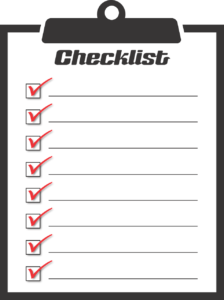Modern medicine has the capacity to halt this pandemic now. COVID-19 is a complex problem affecting the immune, metabolic, endocrine, nervous system, and the inflammatory response. The end result is death when there is severe tissue destruction. To solve the problem, every aspect of it must be systematically and simultaneously addressed.
A group of professionals who have had a lot of success treating chronic pain came together looking to deepen our knowledge of why our approaches were effective. Every chronic disease state has an inflammatory component that causes progressive tissue destruction and creates physical symptoms. It is similar to the COVID problem, only the COVID-19 problems occur much faster. “Plan B” is the result of this workgroup’s efforts and it is continuing to evolve.
Overview of the approach
- Optimizes the body’s readiness to fight off the virus. Every variable is considered.
- Recruits the body’s natural defenses – all of them.
- With viral infection, the primary defense is the immune system modulated by the autonomic nervous system.
- The sympathetic nervous system response is critical for the “fight” phase of warding off the virus.
- The best way to modulate the overactive inflammatory response is by recruiting the parasympathetic nervous system.
- Reinforces these defenses – respecting the fight, flight, freeze, or faint phase of the autonomic nervous system.
- Utilizes major interventions when all else has failed.
- Aggressive treatments are indicated when the body’s defenses are overwhelmed in the freeze/ faint phase. They can also be tailored to support the body’s final attempts to recover.
- With viral infection, the primary defense is the immune system modulated by the autonomic nervous system.
We are asking that this protocol be viewed as a foundation for designing clinical trials and seriously challenged. There is much work to be done regarding dosing and timing. When examining the effectiveness of novel therapies, the basics should always be addressed and documented. We are asking that this approach based on basic human physiology be proven wrong or refined and implemented.
Please contact David Hanscom at [email protected] if you wish to look at the protocol.

The Workgroup
–Stephen Porges, PhD–”Distinguished University Scientist” at the Kinsey Institute, Indiana University Bloomington and professor in the department of psychiatry at the University of North Carolina in Chapel Hill in North Carolina. He proposed the Polyvagal Theory in the 1990’s and published his book, The Polyvagal Theory: Neurophysiological Foundations of Emotions, Attachment, Communication, and Self-regulation in 2011.
–David R Clawson, MD–Physical Medicine and Rehab, Swedish Medical Center, Seattle, WA. He has an unusual grasp of basic human physiology and cell metabolism. He has been instrumental in working with Stephen Porges in figuring out this sequence.
–David A. Hanscom, MD–Orthopedic spine surgeon, Oakland, CA. He retired from his surgical practice in 2019 to focus his efforts on bringing healing back into medicine. He has successfully treated hundreds of patients suffering from chronic pain through the concepts presented in his book, Back in Control: A Surgeon’s Roadmap Out of Chronic Pain. He is the organizer of the workgroup.
–Ray Bunnage–Database and Visualization Developer, U of WA Medicine, Seattle, WA. His expertise is in database development and computer programming. He has an unusual hobby of learning neuroscience and has shared his insights with a wide group of professionals. His breadth of knowledge across several disciplines has been key in integrating many of these concepts.
–Sue Carter, PhD–Appointed director in 2014 of the Kinsey Institute, Indiana University, Bloomington IN. She is world-renowned for her work with oxytocin and vasopressin. She was the first person to identify the physiological mechanisms responsible for social monogamy. She is key in looking at the potential role of oxytocin in calming the inflammatory response of the COVID-19 ARDS. She is married to Stephen Porges.
–Les Aria, PhD–Lead pain psychologist, Kaiser Northern CA, Sacramento, CA. He enjoys treating patients in chronic pain that everyone else has given up on. His approach has been based on The Polyvagal Theory and helping patients feel safe through stimulating the parasympathetic nervous system. His contributions are a result of his extensive clinical experience combined an in-depth knowledge of the autonomic nervous system and neurophysiology of chronic pain.
–Steve Lederman, MD–Cardiology. He is recently retired and although his background on ICU patients has been valuable, his contribution has been in the role of nutrition contributing to inflammation.
–James Taylor, MD–Anesthesiologist, Pain physician, Pinehurst, NC. He is the director of Integrated Pain Solutions (IPS) in North Carolina. He has been innovative in his approach to pain and has utilized cannabinoids as one of his core treatment modalities. He is actively pursuing research to identify the best choices of CBD for solving specific aspects of chronic pain.
Corresponding author – [email protected]
